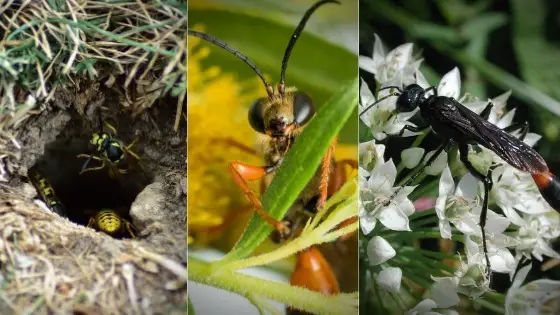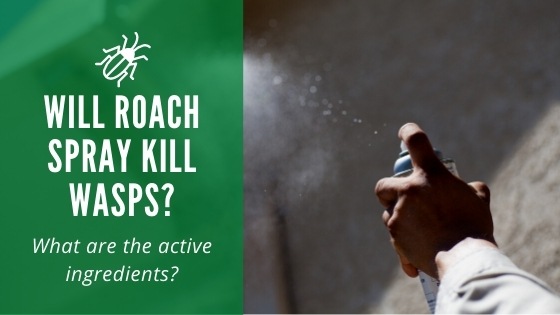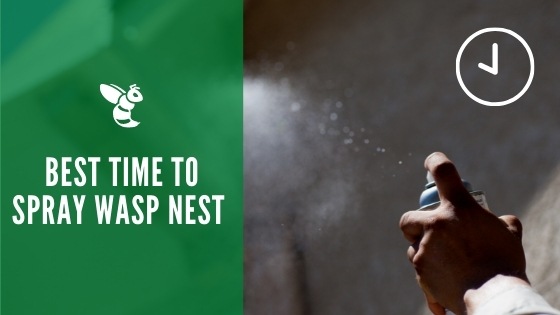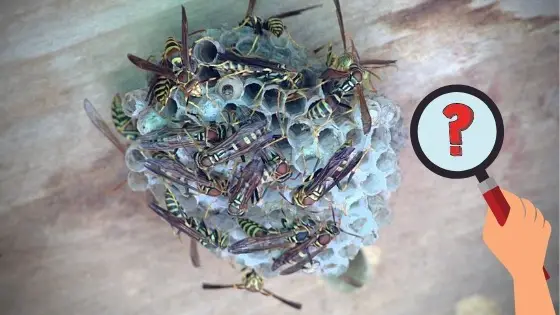What Kind of Wasps Live in the Ground?

Predator insects that live within the ground, wasps will feed on insects in the area. Because of this, they can be very beneficial when it comes to controlling the population of pests like flies and fleas. There are a few different varieties of wasps that live in the ground. You may need to control their population if they are located in an area that makes it unsafe for you to be around them, but you might want to think about leaving them alone.
You’ll notice ground wasps by them coming and going within a specific area of your property. They will pass through the holes that they’ve created in the ground near their nests. It’s unlikely they’ll make these entrances in an area that’s highly traveled, like near a children’s play area or near your front door. Regardless, you should assess the situation before you proceed.
What Kind of Wasps Live in the Ground?
Yellow Jackets
Many people confuse yellow jackets as a type of bee, but they are actually part of the wasp family. They often build their nests within areas below the ground that have been abandoned by rodents and other animals. The nest is formed by chewing up softwood to create a cellulose mixture. The fiber and saliva are shaped into different cylindrical structures.
Yellowjackets are dependent on one another in a colony structure. They can survive the winter by going dormant when temperatures are below the freezing point. Once fall arrives, they become very active in finding more food and beginning to reproduce again.
It’s a good idea to pay attention to their behavior if they’re on your property. They can become agitated if you’re bothering their nest or are in their area. They also have the ability to sting more than once, which is dangerous if you or someone else is prone to an allergic reaction from a yellow jacket sting.
Digger Wasps or Cicada Killers
A ground insect that can grow to as large as two inches in length when fully mature, the Cicada Killers are solitary, raising their offspring independently. Their name comes from the female wasp of this variety.
They use their sting to paralyze cicadas but will generally leave humans alone. They will then bury the cicada within their underground tunnel structure so their larvae can feed off of it.
The tunnel structure of the cicada is comprised of two-foot deep crevices that around the width of a quarter. Once an egg is laid, the female will seal up the tunnel, leaving her young to feed on its own and grow. When they are ready, they will emerge. The female will be long gone.
Threadwaisted Wasps
The threadwaisted wasp variety includes the blue digger, mud dauber wasps and gold digger wasp. During the night the threadwasited wasps will stay in the ground within their nest structure. When the sun comes up they will leave the nest and spend the entire day looking for food. This is also a solitary insect that will leave its young to raise itself.
The golden digger wasp reaches a length of one inch during adulthood, and they have a red / orange hue. The blue digger wasp is black with blue wings. It is a little bit smaller than the gold variety, at ¾ of an inch. Both of these ground wasps will fit up their nests and tunnels with insects such as crickets and grasshoppers.
When to Prevent and Control Ground Wasps
If possible, wait until the fall months roll around. You’ll have less wasp activity to deal with. You can also take care of a wasp issue in the early spring before the wasps are very active again. Spring is a great time to use products and control methods that will prevent wasps from making their nests in your lawn.
The best time of day to apply product to the ground will be the evening hours. The later in the evening you can get out there, this will ensure that the wasps are back in their nests for the night. They’ll have no choice but to come into contact with the product once it has been applied.
Removing the nest of a wasp that is living in the ground isn’t generally too difficult. This is especially true since many of them are solitary. You won’t be surprised by find a large colony living beneath the surface of your property.
Spend a little bit of time assessing where the wasps are going in and out of the ground. You can apply a powder to that area of the ground that is formulated to eradicate wasps of that variety. It helps if you can identify some of the characteristics of the wasps so you can figure out what variety they are.
If you notice that there is a large presence of ground wasps in a specific area, you may want to call in a professional that can safely help you out. You may also need assistance if the nest is in an area that prevents you from using chemical products. This would apply to an area where your pets or children are frequenting.



